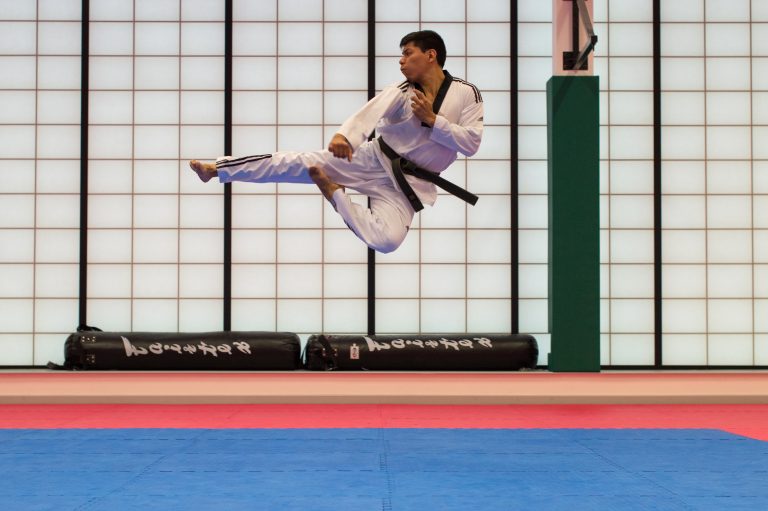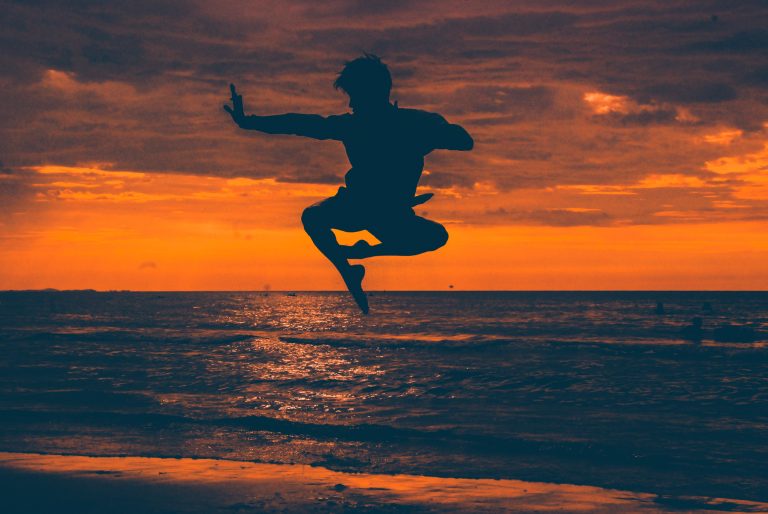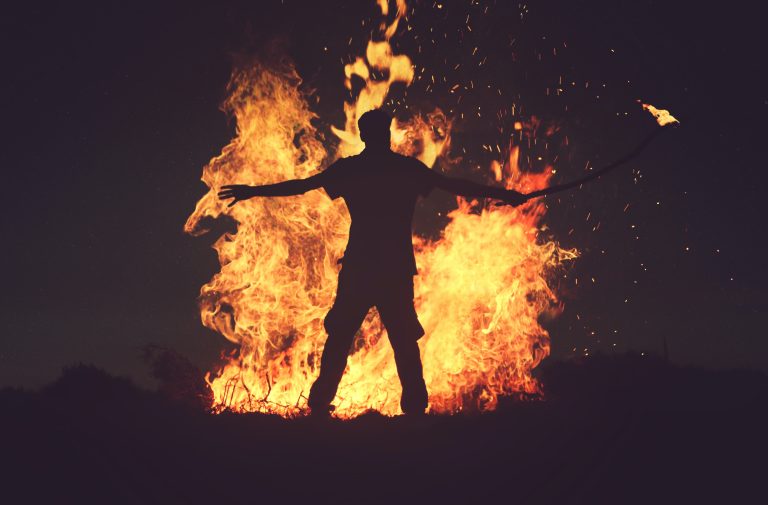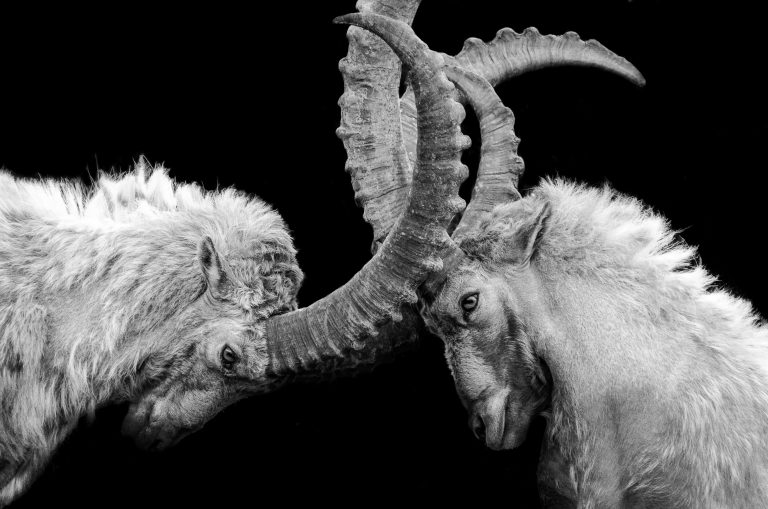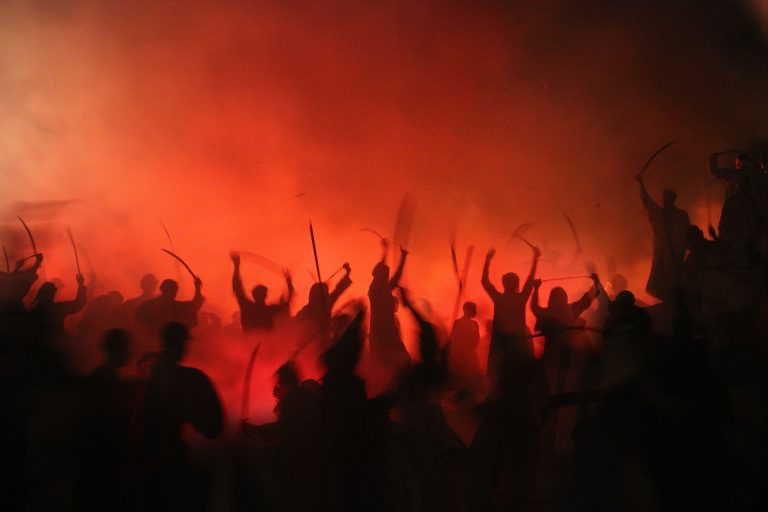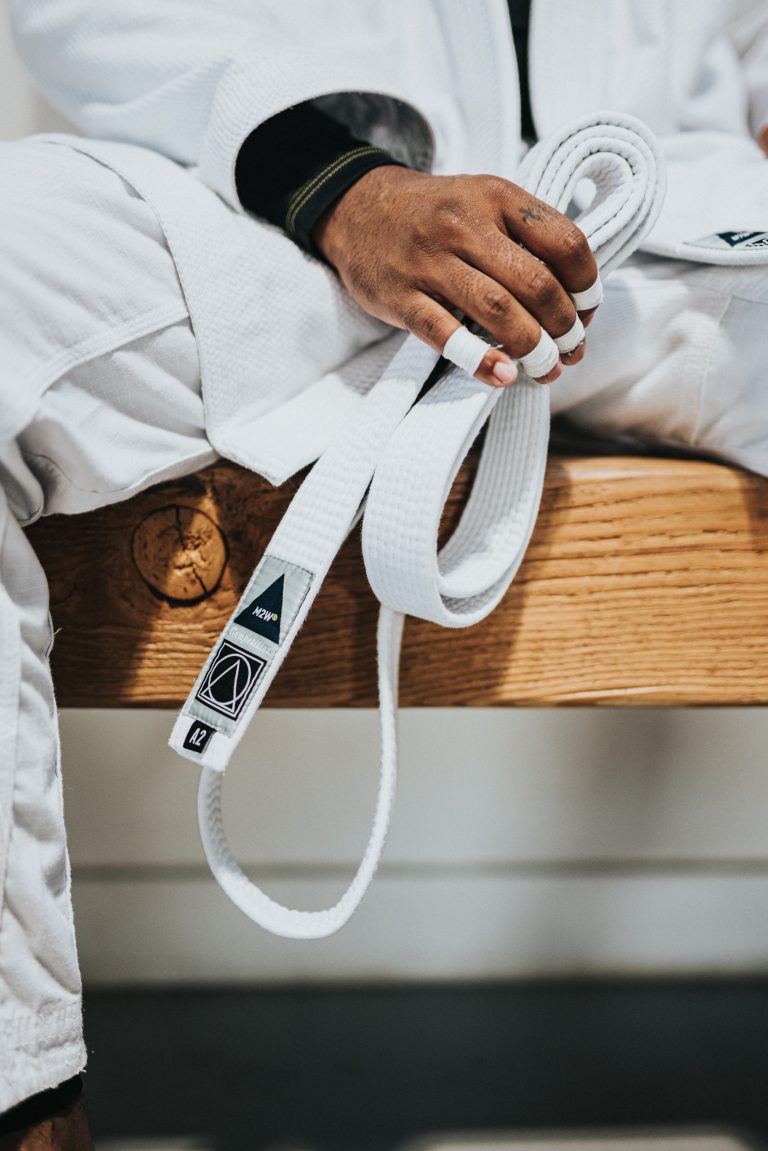What are the Karate Stances?
Karate is a popular martial art that involves various techniques, including stances or positions that are essential for balance, power, and mobility. Stances in karate play an important role as they help in maintaining a solid foundation, delivering powerful strikes, and avoiding attacks from the opponent. In this blog, we will discuss the most common karate stances in detail.
1. Zenkutsu-Dachi (Front Stance)
Zenkutsu-dachi or the front stance is the most basic and commonly used stance in karate. It is a forward-facing stance, where one foot is placed in front of the other, and both feet are pointing in the same direction. The front knee is bent and the back leg is straight. The weight of the body is distributed evenly between both legs. This stance helps in maintaining balance and stability while delivering powerful punches and kicks.
2. Kokutsu-Dachi (Back Stance)
Kokutsu-dachi or the back stance is a defensive stance in karate. In this stance, the back foot is placed diagonally behind the front foot, and the feet are shoulder-width apart. The weight is distributed more on the back leg while the front leg is straight. The waist and hips are turned sideways, and the upper body leans slightly forward. This stance helps the practitioner to evade the opponent’s attack and counter-attack with a powerful technique.
3. Kiba-Dachi (Horse Stance)
Kiba-dachi or the horse stance is a low and stable stance that is used for developing leg strength and balance. In this stance, the feet are placed wider than shoulder-width apart, with the toes pointing outwards. The knees are bent, and the weight is distributed evenly on both legs. This stance helps in delivering strong kicks, punches, and strikes, as it provides a solid foundation and stability.
4. Shiko-Dachi (Sumo Stance)
Shiko-dachi or the sumo stance is a wide and powerful stance that is used in karate as well as sumo wrestling. In this stance, the feet are wider than shoulder-width apart, and the toes are pointing outwards. The knees are bent, and the body is slightly lowered. The weight is distributed evenly between both legs. This stance helps in improving leg strength and stability while delivering powerful techniques.
5. Sanchin-Dachi (Hourglass Stance)
Sanchin-dachi or the hourglass stance is a narrow and powerful stance that is used in many martial arts, including karate. In this stance, the feet are placed close together, and the toes are pointing forward. The knees are bent, and the weight is distributed evenly between both legs. The hips are pushed forward and the upper body is slightly inclined forward. This stance helps in generating power and stability while delivering close-range techniques.
What Are The Karate Stances?
Introduction
Karate is one of the most popular forms of martial arts, and it has a rich history that dates back hundreds of years. It involves a series of punches, kicks, and strikes that are designed to help individuals protect themselves from physical harm. However, in order to truly master karate, it is important to start with the basics, such as learning the proper stances.
In this article, we will answer some of the most frequently asked questions about karate stances, including what they are, how to do them, and why they are important.
What Are Karate Stances?
Karate stances are the foundation of all karate techniques. They provide a stable base for attacking, defending, and moving. There are several different types of stances in karate, and each one is designed to serve a specific purpose.
Horse Stance
The horse stance is one of the most basic stances in karate. To do this stance, start by standing with your feet shoulder-width apart. Then, bend your knees and lower your body until your thighs are parallel to the ground. Keep your back straight and your arms in front of you for balance.
This stance is primarily used for stability and power when performing strikes and blocks.
Front Stance
The front stance, also known as the zenkutsu-dachi, is a forward-facing stance that is commonly used in karate. To do this stance, start by standing with your feet hip-width apart. Then, step one foot forward and bend your front knee, while keeping your other leg straight. Your back leg should be turned out slightly, with your heel raised off the ground.
This stance is primarily used for attacking and moving forward.
Back Stance
The back stance, also known as the kokutsu-dachi, is a backward-facing stance that is used for defensive techniques. To do this stance, start by standing with your feet hip-width apart. Then, step one foot back and bend your back knee, while keeping your other leg straight. Your front leg should be turned in slightly, with your heel raised off the ground.
This stance is primarily used for moving backward and blocking.
Why Are Karate Stances Important?
Karate stances are the foundation of all karate techniques. Without a proper stance, it is impossible to effectively perform strikes, blocks, and other techniques. Stances also help improve balance, power, and stability, which are essential for any martial artist.
Additionally, learning different stances helps to train and strengthen different muscle groups, leading to a more complete and well-rounded physical fitness.
What are the Karate Stances?
Karate is a martial art that involves a wide range of stances to provide martial artists with stability, power, and flexibility during training and competition. These stances – or Kamae – vary from beginner to advanced levels and are considered fundamental building blocks of karate. In this article, we will go through the different Karate stances and provide step-by-step instructions for each.
Basic Karate Stances
There are three fundamental karate stances that every beginner should learn in order to establish a solid foundation for their karate training. These stances include:
Horse Stance
The horse stance is a basic stance that is used to develop leg strength, stability, and balance. To perform this stance:
Step 1: Stand with your feet slightly wider than shoulder-width apart.
Step 2: Turn both feet outwards to a 45-degree angle.
Step 3: Bend your knees while keeping your back straight and your hips pushed forward.
Step 4: Lower your body so that your thighs are parallel to the ground.
Step 5: Hold the position for 30-60 seconds.
Front Stance
The front stance – also known as the walking stance – is used as an offensive and defensive stance in karate. To perform this stance:
Step 1: Start with one foot in front of the other, with your feet about shoulder-width apart.
Step 2: Move your front foot forward, so that your front knee is bent and your back leg is straight.
Step 3: Your back foot should be at a 45-degree angle to the front foot.
Step 4: Keep your weight distributed evenly between both feet.
Back Stance
The back stance – also known as the cat stance – is another defensive stance used in karate. To perform this stance:
Step 1: Start with your feet shoulder-width apart.
Step 2: Move your left leg back behind your right leg.
Step 3: Keep your back straight and your body weight on your back leg.
Step 4: Your front knee should be bent while your back leg should be straight.
Intermediate and Advanced Karate Stances
Once you have mastered the basic stances, you can move on to intermediate and advanced stances, which require more advanced levels of strength, balance, and flexibility. These stances include:
Kiba Dachi
Kiba Dachi is also known as the „horse-riding“ stance and is a deeper and more stable version of the horse stance. To perform this stance:
Step 1: Begin in a horse stance.
Step 2: Slowly lower your body so that your thighs are below parallel to the ground.
Step 3: Keep your weight evenly distributed between both feet.
Zenkutsu Dachi
Zenkutsu Dachi is a more advanced version of the front stance, that is used more for offensive purposes. To perform this stance:
Step 1: Start with one foot in front of the other, with your feet about shoulder-width apart.
Step 2: Step your front foot forward so that your front knee is bent, and your back leg is straight.
Step 3: Your back foot should be at a 45-degree angle to the front foot.
Step 4: Lower your hips and push your back leg forward to maximize your stance’s length.
Kake Dachi
Kake Dachi is also known as the „hook leg“ stance and is used for more advanced kicks and strikes. To perform this stance:
Step 1: Start in a horse stance position.
Step 2: Lift one foot and pivot on the ball of your other foot.
Step 3: Place the lifted foot behind your standing leg with your toes pointing outward.
Step 4: Ensure that your standing knee is bent and your weight is evenly distributed.
Conclusion
Karate stances are fundamental to an effective karate practice. It is essential to learn the basics of the three fundamental stances before moving onto intermediate and advanced stances. With practice and focus, karate practitioners can develop the strength, flexibility, and balance to perform advanced karate stances. The above steps provide a good foundation to begin your karate training in stances.
Inhaltsverzeichnis

